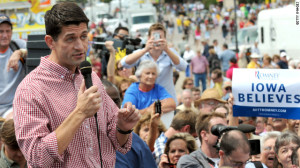Romney’s Gamble

Mitt Romney’s selection of Paul Ryan as his Vice-Presidential candidate continues the trend of peculiar GOP VP selections in recent history. In 2000, George W. Bush tapped Dick Cheney to head up his Vice-Presidential Search Committee. After all signs were pointing to Missouri U.S. Senator John Danforth as the pick, Cheney proceeded to throw his own name in the ring—becoming the only Vice-President to select himself for the job. In 2008, John McCain chose Sarah Palin, the little-known Governor of Alaska who had been on the job for less than two years. Ryan is not a product of self-nepotism nor is he an obscure greenhorn. He is nevertheless an unconventional Vice-Presidential candidate.
The traditional calling card of Vice-Presidential candidates is Hippocratic in nature: do no harm. Vice-Presidential candidates do not win elections, Presidential candidates do. The best Vice-Presidential candidates simply demonstrate the competency to be a heartbeat away from the Presidency while serving as a glorified cheerleader and attack dog on the campaign trail. As the author of a controversial budget plan that would significantly alter Medicare and Social Security, safety net programs that compose the third-rail of American Politics, Ryan is no mere cheerleader. Ryan has become the star of the 2012 Presidential campaign. Republicans paint him as the hero. The Democrats: the villain. Why did the Romney campaign go so far off script when choosing Ryan?
The dog days of summer came early and particularly flea-ridden for Mitt Romney. His criticisms of Obama’s handling of the economy did not seem to make headway with voters, despite weak jobs reports in May and June. He seemed more like Clark Griswold than Commander-in-Chief in his sojourn through Europe and the Middle East. Most damaging was the Obama campaign success at painting him as cold and out-of-touch with their incessant criticisms of his record at Bain Capital.
Polls showed Romney entered August consistently trailing Obama in virtually every swing state. Under the campaign’s current strategy, Romney stood to win 47 to 49 percent of the electorate—not enough to win the presidency. His selection of Ryan reflects a campaign realizing it is behind and it is looking to shake things up. Ryan’s presence on the trail shifts Romney’s laser-like focus on the state of the economy towards the contents of Ryan’s budget plan, which has become synecdoche for Ryan himself. The change-up is a gamble. Ryan’s budget may resonate with voters uneasy with the ballooning federal deficit. But it also thrusts Social Security and Medicare, traditionally weak points for Republicans, into the spotlight. The heavily-scrutinized budget could very well serve as a liability for Republicans come November.
Ryan’s selection could be a product of simple arithmetic. A series of polls in various swing states revealed that only 5 percent of voters were undecided. Of those who were decided, only ten percent said they open to changing their mind. In comparison, about 25 percent of voters said they might change their minds at this point in 2008. Romney’s choice could reflect a strategy to boost support amongst those on the far right than mine for undecided voters. Ryan excites the Tea Party wing of the GOP, a group who has long wrinkled their nose at Romney. However, if Romney were to adopt such a strategy wouldn’t it behoove him to pick someone like Senator Marco Rubio from Florida? Rubio is a Tea Party favorite who lacks Ryan’s legislative paper trail.
The bottom line is Vice-Presidential candidates do not win elections, Presidential candidates do. One has to go back to 1960 with John F. Kennedy’s selection of southerner Lyndon Johnson for a VP candidate who significantly altered the electoral landscape. What Romney’s choice will do is change the Romney campaign’s narrative. Romney rolled the dice in selecting Ryan, but after his lackluster summer, he may have had no choice.